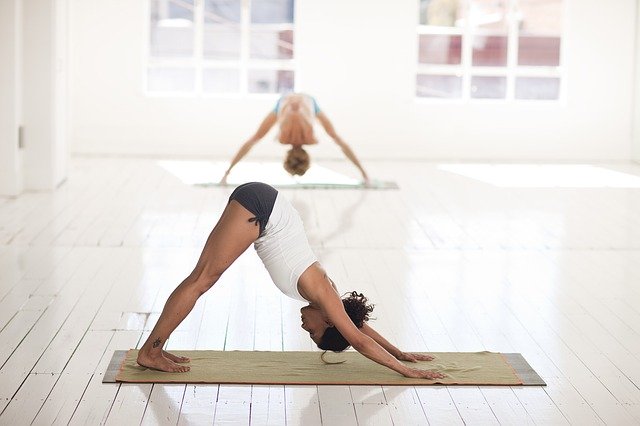
HOW TO DO YOGA AT HOME: 5 EXERCISES FOR A PERFECT START TO THE DAY.
Do you know how to do yoga at home?
Have you ever thought that doing yoga in the early morning might really improve the quality of your day? Do you know how to do yoga at home? You just need willpower and constancy, that’s it! Are you willing to wake up a little early and enjoy 30 minutes of well-being as soon as you get out of bed? At first it may seem like a sacrifice, but the benefits will be evident from the first sessions. All you need is a well-ventilated room, a mat and (possibly) silence or soft music.
What is yoga good for?
Do you know what is yoga? Before illustrating the exercises to start your days in the best way, let’s see together what benefits yoga brings at sunrise:
- Yoga in the morning can reduce or even eliminate several back pains due to poor posture during sleep, a mattress or a poor-quality pillow.
- You will be able to recharge and feel your body active and vibrant. It often happens that you wake up even more tired than before and the desire to get back under the covers is too much. With this sweet routine you can start with energy and vitality!
- It increases the flexibility. It is always useful as well as pleasant to spend a day full of commitments and feel your body flexible and soft. Don’t worry if as soon as you get up you feel stiff as a log, just a little patience and a regular breath to soften.
- Increase the sense of well-being and relaxation during the day. Thanks to this practice you can take with you this sense of widespread well-being and also transmit it to the people around you.
The 5 exercises for a perfect day.
First it is important to remember that proper breathing is the key to the good performance of each exercise. Lie down on your mat and begin to breathe normally, trying to synchronize the length of the exhale with that of the inhale. Now let’s see how to do yoga at home and what are the best 5 exercises in the morning:
- Sun salutation. Get up and take to the top of the mat by starting the Sun salutation Surya Namaskara. Do a few cycles (5 minutes) in order to heat the whole body and finally rest on the mat. Listen to what has changed in muscular and respiratory. The sun salutations are potentially endless, and the rhythm of the sequence can also vary, as each instructor can change the cycle by adding new positions to increase the intensity of movement and to involve additional muscle chains.
- The position of the cat. Move into quadrupedal position and try to keep your wrists aligned with your shoulders and open your knees as wide as your pelvis. Now let’s begin to inhale and look forward arching the column, exhale and bend your back looking towards the navel (try to relax as much as possible the neck). This position will allow you to awaken your spine and begin to dissolve mild contractures and tensions.
- Balasana, the position of the child. To enter the balasana, it is necessary to bring the buttocks on the heels and stretch the arms forward imagining touching something beyond the mat. If the classic version of balasana creates pain, there are small adjustments or changes to the position. It is important to focus on the breath: imagine creating space between each individual vertebra stretching your arms and breathing deeply. In this position it is possible to breathe bringing the attention to the chest and lungs that expand naturally, without blockages. For this reason, the position is also used as a remedy for anxiety, claustrophobia and various respiratory problems. In each inhale you feel the navel rising gently, in each exhale you retract the abdomen towards the column with gentleness and patience.
- Cobra, Bujangasana. From the supine position it is necessary to hold the arms still and raise the torso in a gentle but tenacious way. The legs should be held taut and perfectly parallel, the elbows should remain slightly flexed and the palms should remain on the ground. It is important to keep the contracted buttocks in order to protect the lower back.
- The position of the Half-moon. Standing in the position of the mountain. Feet and legs together, bring your arms up with your hands together and tilt the entire torso to the right. Breathe in deeply and feel your chest expand. Repeat from the other side.
